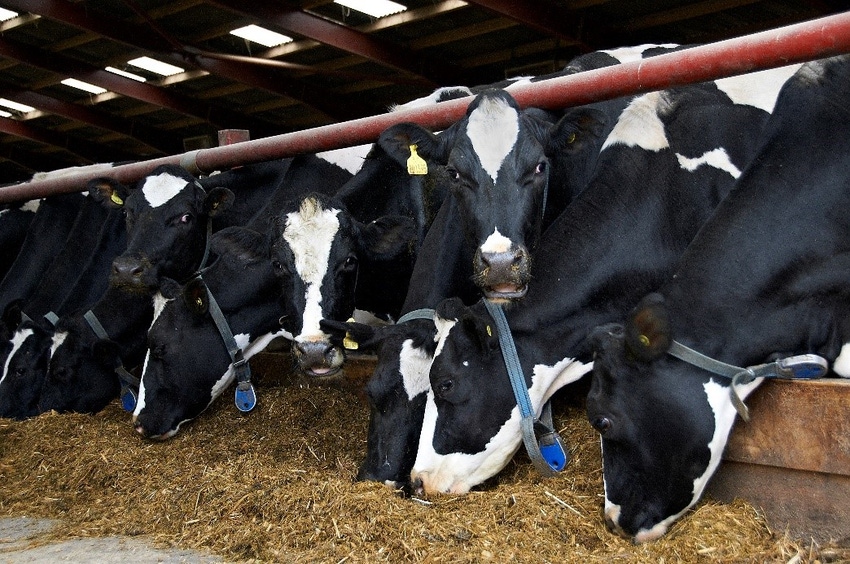Michigan State research demonstrates improvements in cow productivity with specific fatty acid supplementation through early lactation.
August 7, 2020

The concept of feeding fat in dairy rations is not new, as the energy-dense nutrient is beneficial to meeting increased nutritional requirements as cows simultaneously produce milk while maintaining body condition ahead of breeding.
However, something that is new is the developing science that builds on the knowledge of the roles different fatty acids — the building blocks of fat — play in animal performance, according to information presented during a briefing hosted by Volac Wilmar Feed Ingredients.
Dr. Richard Kirkland, global technical manager for Volac Wilmar Feed Ingredients, said new research findings present dairy producers with opportunities to target specific fatty acid blends according to the requirements of individual farms.
Just like dairy nutritionists have been moving away from crude protein calculations in favor of formulating on an amino acid basis, Kirkland said they are also moving from fat to specific fatty acids.
“Data indicate key roles for palmitic (C16:0) and oleic (C18:1) fatty acids at different stages of lactation and depending on requirements at farm level,” Kirkland said.
“C16:0 is very beneficial in improving milkfat production and yield, but it is now clear that this may be at the expense of body condition and weight loss in early lactation, the knock-on effects of which may include poor fertility," he added.
"In contrast, delivering C18:1 to the small intestine, achieved by supplementing with rumen-protected calcium salts, improves total fat digestibility and can enhance fertility through improved egg and embryo development," Kirkland said. "Unlike C16:0, C18:1 helps partition nutrients toward body fat stores, reducing body condition loss in the critical early-lactation period."
C16:0 to C18:1 ratio
In a recent study presented at the 2020 American Dairy Science Assn. virtual annual meeting, Michigan State University professor Adam Lock’s group evaluated the response to a rumen-protected fat supplement containing a 60:30 ratio of C16:0 to C18:1 (Mega-Max) on cow performance from calving through early lactation.
“There’s a long-standing industry dogma that fat shouldn’t be fed to fresh cows, as body fat is also being mobilized to provide energy. However, findings from our previous research indicated this needs to be challenged and [is] something that needed to be analyzed further,” Lock explained.
During the study, dairy cows were offered a control ration with or without supplementation with the 60:30 blend from calving until 24 days in milk. From 25 to 67 days in milk, each group was further subdivided into control or 60:30 blend-supplemented rations.
“Throughout the fresh period (days 1-24 in milk), control and fat-supplemented cows maintained similar body condition. However, the fat-supplemented group saw notable increases in milkfat percentage and yield, resulting in 3.1 kg more energy-corrected milk than the control group,” Lock said.
“Supplementing cows in the fresh period and then throughout the peak period (days 25-67 in milk) had no effect on dry matter intake but increased milk yield by 5.1 kg per day and milkfat content by 0.2%. This led to a significant increase in milkfat yield from 1.76 kg to 2.07 kg per day in control and fat-supplemented treatments, respectively. Crucially, this was achieved without increased loss of bodyweight or condition score,” he reported.
Data from this new study support the concept that fatty acid profile through early lactation is crucial to ensuring that production responses resulting from supplementation with fat do not push the cow into further negative energy balance.
These findings highlight the opportunity to manage the C16:0-to-C18:1 ratio through lactation, said John Newbold, professor of dairy nutrition at Scotland’s Rural College.
“It is clear that when considering fat supplements for dairy cows, lower C16:0 with higher C18:1 supplements are most appropriate through early lactation to help partition nutrients toward body reserves and prevent excessive body condition loss. Furthermore, providing more C18:1 to the ovary is beneficial for development of embryos, and the improved digestibility provides an additional boost in megajoules,” Newbold said.
Calcium salts remain the only effective method of supplying C18:1 to the small intestine without disrupting rumen fiber digestion and reducing milkfat production, with the data from Michigan State indicating that a 60:30 ratio of C16:0 to C18:1 in calcium salt form is especially beneficial, he added.
Moving into mid-lactation, target body condition score should be met so a higher C16:0 supplement can be considered to fuel milk and milkfat production, Newbold said. For some farms, the supplementation of a high-C16:0 supplement at 80-90% C16:0 may be beneficial in late lactation to prevent cows from gaining excess body condition ahead of calving.
Rumen protection
When it comes to fat supplements, Kirkland noted the importance of rumen protection. Rumen-protected fatty acids, such as calcium salt supplements, allow fat to be increased in the diet without negative effects on fiber digestion, as is the case with liquid oils or high-fat ingredients such as brewer’s grains.
“Rumen protection is also essential to deliver the unsaturated fatty acids, such as C18:1, to the small intestine for digestion and utilization by the cow,” Kirkland said.
“Working in tandem with sufficient dietary fat supply and most-appropriate fatty acid profiles, rumen-protected fat supplements offer producers the ability to meet specific nutritional requirements at varying stages of lactation to optimize herd performance,” he concluded.
You May Also Like


.png?width=300&auto=webp&quality=80&disable=upscale)
